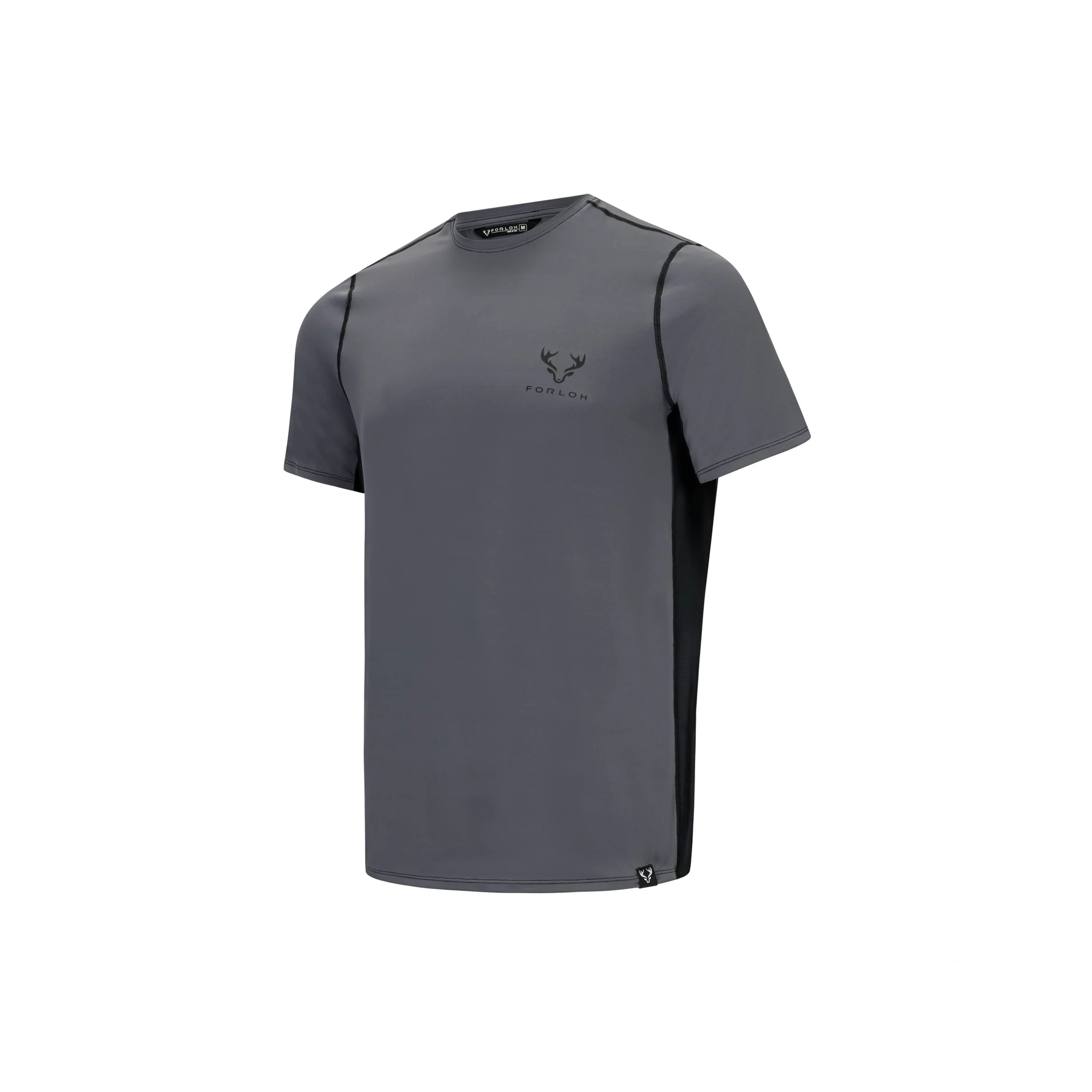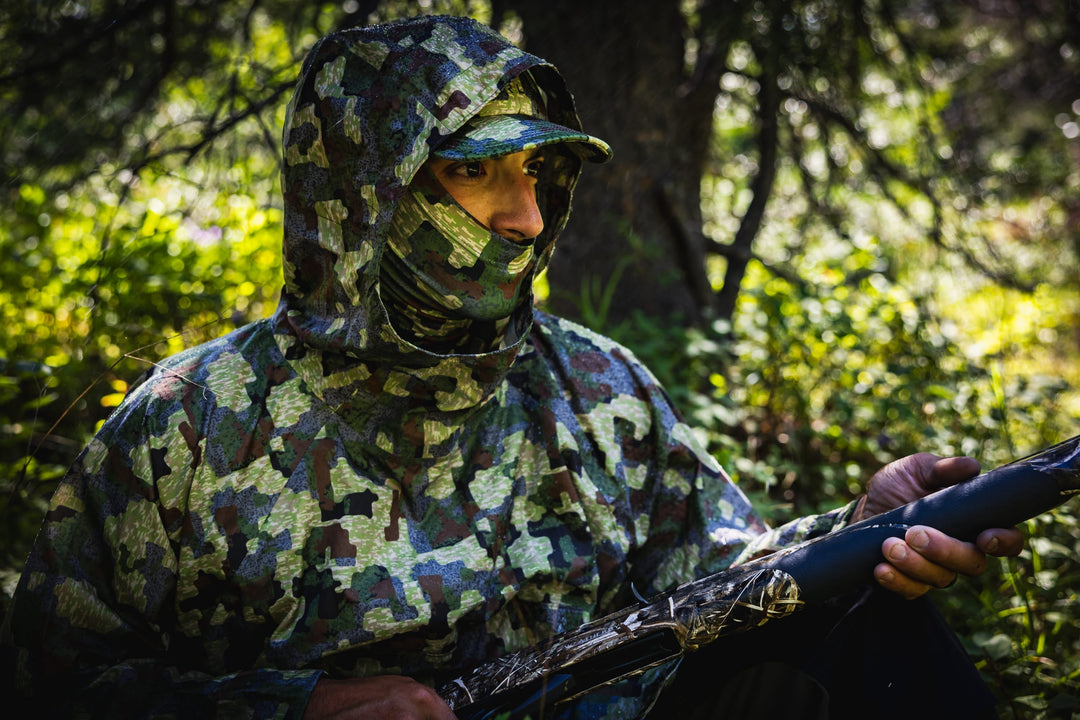-By Everett Headley

Pictured: AllClima Jacket, AllClima Stretch Woven Pants
"Be prepared."
The motto of the Boy Scouts is something I learned to take to heart during my many adventures with the program. It became a life skill that carried over into many areas of my life and continues to be a maxim in my outdoor pursuits. Many times we’ve all been in situations wishing we just had one thing that would have made the difference at the time. Our escape from society into the wild also means that we distance ourselves from immediate help that forces us to rely on ourselves to survive and rescue.
What is the first thing for a hunter to do in an emergency situation?
Knowing the acronym STOP will keep a bad situation from getting worse:
S- Stop: When you realize you are lost or in a situation where you need help, do not go further.
Exposing yourself to further dangers (weather, terrain) increases your chance of risk and decrease your chance of survival. If you are actively being searched for, a moving target is more difficult to find than a stationary one. Sitting down will also help you to calm down and not panic about your situation.
T- Think: Once you are able to think clearly recall where you started, where you were going, and how you got to where you are now. Depending on your circumstances, this may be all you need to do to self-rescue. However, if you are truly lost, then you need to consider what your needs are and prioritize. Shelter, fire, and water will see you through the next handful of days, if that’s how long it takes to be found. Considering how much daylight you have, what weather conditions are likely, and how long it will be before someone realizes you haven’t return will help to organize your thoughts.
O- Observe: Start with your smallest circle and expand in increasing increments. What is on you (clothes, gear), what is in your pockets, do you have boots on? Then inventory your pack: Do you have a meal replacement bar, survival kit, poncho, fire starters? Then look immediately around where you are: Are there any dead trees to fall on me, am I exposed on a mountain top, is there anything around me I can use? Your largest circle will look at what landmarks are in the distance, if you see human habitation (buildlings, smoke, roads,) or somewhere safer to move to.
P- Plan: With all that information you can now make the determination if you stay or self-rescue. If you are in doubt which to choose, then stay. Build a fire, shelter, and wait; most rescue situations resolve in 24-72 hours.
What Should Every Prepared Hunter Carry?

"A hunter’s pack will vary based on season, environment, game, and remoteness."
My assumption is you will, like me, have many items that you can use to help you in a true emergency situation. A personal stove will purify water and create a warm drink for someone hypothermic. Kill kits with sharp knives and game bags transform into useful tools if needed. Most of these are already in your pack and are rotated and inspected regularly. I’ve learned that I really don’t need as much as I used to carry and think in terms of what I need to stay in the hunt or think about evacuating to definitive care.
Then there is the list below, what I call my “911 Kit.” I’ve refined it over my hunting career to be compact and essentials only. Again, its purpose is to keep me alive until rescue or expedite my own way out.

Pictured: Exposed Camouflage
- Personal Locator Beacon. Phones and two way radios have limitations that satellite messengers overcome. My choice is the Garmin In-Reach Mini. It allows me to have two way text conversations anywhere, important if I need directions out or to update my status. The Mini connects to my phone which makes texting easier, but it can also stand on its own. The SOS button alerts an array of local authorities. These devices are the least expensive insurance a hunter can buy. The initial outlay may seem steep, but spread over several seasons is really less than a pair of socks each year. Stories of survivors could have been shortened significantly if a PLB had been in their kit.
- Knowledge. It weighs nothing and is always available. As a Wilderness First Responder I know how to assess and address life threats in the field. Most situations don’t arise to that level, but knowing when to gut it out or to get out is vital. A WFR course is intense and long, but some type of Wilderness First Aid should be on every hunter’s resume. You can’t use a tool if it isn’t in the toolbox. Expanding your skills in knots, basic survival, reading the weather, and knowing what plants are edible (and more importantly, are inedible) are worth the investment.
- First Aid Kit. A pre-assembled kit is a good place to start, but it should be tailored to your own skills, scenario, and needs. Coupled with your WFR or WFA, you won’t need to bring the kitchen sink. Knowing what you have that you already have in your pack that you could utilize will save weight and space: no butterfly stitches, get the duct tape; no SAM splint, use a hiking stick. My medicine kit is divided into boo-boos and blood control. The idea is I have what I need to keep me comfortable on the mountain or what I need to ensure I can get down it. It is also a good idea to strip out the unneeded packaging and microtrash.
- CAT Tourniquet. This piece of gear gets its own mention. I actually carry two: one in my FAK and one in my hip pocket for immediate access. When a combat application tourniquet is needed, you don’t want to dig through your pack to find it. If you get into a situation where you are separated from your gear, you still have it on you. Training and understanding of tourniquets has come a long way, so make sure you are up to date on how to use one.
- Space Blanket. Emergency shelter. Hypothermic wrap. Signaling device. These lightweight blankets have so many uses that you could argue for carrying an extra one. I make sure that mine are orange, not black on the colored side.
- Fire Makers. Carrying multiple methods ensures that you don’t have to worry about finding two sticks to rub together. Matches get wet, lighters break (keep the striker!) and when you need a fire, you REALLY need a fire. Keep some quick igniting tinder with it as well. There is new stuff on the market that will light underwater, or stick with what you know; I still use cotton balls impregnated with vaseline.
- Emergency Meds: Allergies are becoming more common and carrying an epipen and knowing how and when to use them can save a life. If you take daily meds, keep a spare couple of doses in a bottle with cotton to silence the rattling.
- Spare Headlamp With Extra Batteries. My emergency lamp weighs about an ounce and will light just the path in front of me. I trade brightness for saving space and weight. If it comes out of the kit, it is really to just get me back to safety when my main headlamp is dead. A waterproof light source is invaluable for extraction and safety.
- Paracord. A length of 50-100 feet doesn’t take up much room. True paracord is incredibly strong and versatile. It can make shelter, improvise a sling or replace shoelaces (as an emergency).
There are a few rules that govern this kit:
- It never leaves my pack. If I drop gear from my pack to go “light” for a final stalk or for a packout, the kit stays. It is only useful if I have it.
- It is never used, unless there is a genuine need. When I need a lighter to start a fire, I will get the one from my truck, not rob my kit. Convenience does not rise to the level of need.
- It is always checked before a trip. It’s entirely possible rule number two was broken and you aren’t aware. I make sure that nothing has broken, everything is in working order, and anything that might expire has been replaced.
"What you carry, or don’t, should change based on your experiences in the field and the level of your skills."
Never underestimate the potential for an emergency to arise; even with experienced hunters unexpected events can drastically change a situation and outcome. With these suggestions, a hunter should be able to weather a storm or self-rescue.
About the Author: Everett Headley is an outdoor writer and educator. He was raised hunting and fishing in Montana. He lives in the Bitterroot with his Chesapeake Bay retriever, Cane, and his peregrine falcon, Freyja. You can find more of his work at www.406.life and on Instagram @everettheadley
Related: Journey to 100 Hunts, The Hunter's Calendar
Shop our Warm Weather Collection, AllClima Jacket, AllClima Stretch Woven Pants, Exposed Camoflauge








